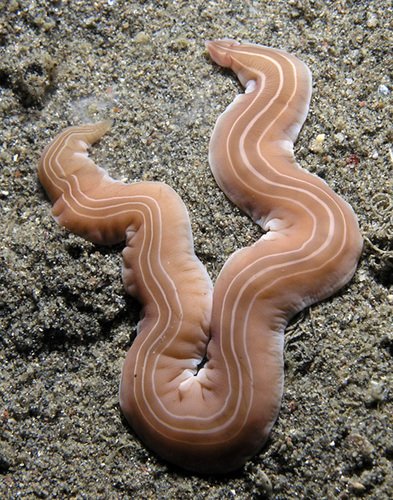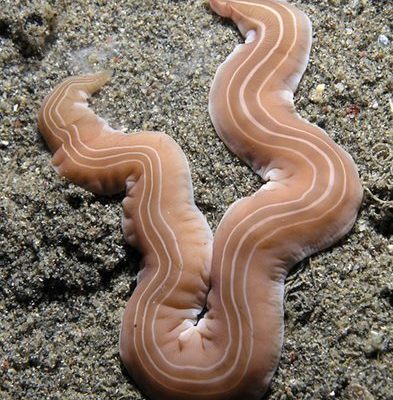
Classification of these intriguing organisms isn’t just a scientific exercise; it helps us understand their biology, behavior, and ecological importance. So, let’s dive in and explore the world of ribbon worms and how they fit into the larger picture of marine life.
What Are Ribbon Worms?
Ribbon worms, or nemerteans, are a group of invertebrates known for their long, slender bodies. They can range from a few centimeters to several meters in length! This might surprise you, but a species called *Lineus longissimus* can reach up to 30 meters long. Imagine encountering something as long as a blue whale—but only the size of a worm!
These worms are typically found in marine environments, from tidal pools to deep-sea habitats. They often have a fascinating way of hunting. Many species possess a specialized structure called a proboscis, which can shoot out to capture prey, much like a tongue flicking out to snag a tasty insect. This adaptation makes them efficient predators, consuming everything from small invertebrates to fish eggs.
Classification of Ribbon Worms in Nemertea
Ribbon worms belong to the phylum Nemertea, which is divided into several classes. The most recognized among these classes are *Anopla* and *Enopla*. Each class has its own unique characteristics, making the classification process quite interesting.
Anopla includes species that typically have a simple proboscis without any spines. They tend to be more common in shallow, coastal waters. On the other hand, the class Enopla features species that have a more complex proboscis with spines, aiding in their predatory activities. They are often found in deeper waters and can be quite diverse in terms of their habitats.
Understanding this classification allows scientists to communicate effectively about the different species, assisting in the study of ecology, evolutionary biology, and conservation efforts.
Key Characteristics Used in Classification
When classifying ribbon worms, scientists consider several key characteristics. These include body structure, reproductive methods, and the morphology of their proboscis. Each of these traits helps distinguish one species from another.
- Body Structure: Ribbon worms can be either cylindrical or flattened, influencing their movement and habitat.
- Proboscis Structure: The presence of spines and the overall design of the proboscis play a crucial role in identifying different species.
- Reproductive Methods: Some species reproduce sexually, while others can reproduce asexually by fragmentation, adding another level of complexity to their classification.
Using these characteristics, researchers can develop a clearer picture of the relationships between different ribbon worm species, promoting a better understanding of their evolutionary history.
Importance of Ribbon Worms in Ecosystems
Ribbon worms play essential roles in their ecosystems. As predators, they help control populations of their prey, maintaining a balanced food web. They also serve as food for other marine animals, including fish and larger invertebrates.
Additionally, ribbon worms contribute to nutrient cycling within their environments. Their activities help break down organic matter, returning essential nutrients to the ecosystem. This process supports the growth of various marine organisms, from plankton to large fish.
Without ribbon worms, many marine ecosystems would face imbalances, leading to overpopulation of certain species and a decline in others. So, understanding their classification and biology is crucial for marine conservation efforts.
Current Research and Discoveries
Research on ribbon worms is ongoing, and scientists continue to uncover new species and their ecological roles. Advances in genetics and molecular biology have provided powerful tools for studying these organisms at a deeper level.
For instance, researchers are using DNA sequencing to clarify relationships between ribbon worm species. This approach can reveal unexpected connections and help refine classification systems. The more we learn about these fascinating creatures, the more we realize their complexity and importance.
Moreover, studying ribbon worms can offer insights into environmental changes. Changes in their populations can signal shifts in marine ecosystems, making them valuable indicators of ocean health.
Exploring how ribbon worms are classified in Nemertea opens up a whole world of wonder. These unique creatures, with their fascinating adaptations and ecological importance, deserve our attention and appreciation.
From their distinct body structures to their vital roles in the marine ecosystem, ribbon worms remind us of the incredible diversity of life beneath the waves. As scientists continue to study these organisms, we can better understand our oceans and the interconnectedness of all living things. So next time you think about marine life, remember the ribbon worm—it might just be the unsung hero of the sea!

